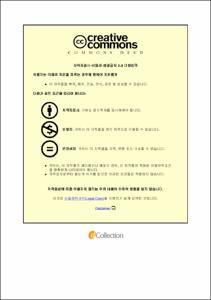Efficacy and Tolerability of Radiosurgery in the Treatment of Benign Meningioma :Dose Comparison Study from a Single-Center Analysis
- Abstract
- OBJECTIVE: Meningioma is a mostly benign brain tumor, constituting about a third of all brain tumors. It's categorized into three grades by the WHO. The primary treatment is surgical removal, but stereotactic radiosurgery (SRS) is increasingly used, especially for low-grade, difficult-to-access, or recurrent tumors. SRS delivers targeted radiation, showing high efficacy in tumor control and neurological function preservation. Despite its efficacy, optimal radiation doses and long-term effects are still uncertain, and treatment approaches continue to evolve, with recent trends favoring lower radiation doses.
METHODS: In this study, 162 patients with WHO grade I benign meningiomas were treated with single-session SRS using the TrueBeam system from 2014 to 2022. Patients undergoing repeated or fractionated SRS were excluded. Treatment effectiveness was assessed using radiologic image scans, focusing on local control rate, progression-free survival, and radiation-induced toxicity. Patients were divided into two groups based on their radiation dose (above or below 14 Gy) for further analysis. Statistical analysis was conducted using SPSS, following STROBE guidelines and with IRB approval.
RESULT: Between March 2014 and December 2022, 162 patients with 190 meningiomas were treated with SRS at our center. After excluding some cases, 147 patients with 164 lesions were analyzed. The patients' average age was 61 years, predominantly women (76.2%). Most were asymptomatic, while others had various symptoms. Diagnoses were mainly via Magnetic Resonance Imaging, with some histopathologic confirmations. The lesions were almost equally split between skull base and non-skull base locations. The median follow-up was 42 months. The average target volume for SRS was 4.49 cm³, with a median dose of 14 Gy. Clinical progression was observed in 8 patients (5.4%), with high progression-free survival rates at 1, 2, and 5 years. Treatment outcomes included partial responses and stable disease, with a 95.1% crude local control rate. Radiation-induced adverse events occurred in 27.2% of patients, varying in severity. Peritumoral edema post-SRS was noted in 12.8% of lesions, with a higher incidence in the group receiving higher radiation doses. Overall, the study highlighted the effectiveness and safety profile of SRS in meningioma treatment, with considerations for optimal radiation dosing.
CONCLUSION: This study found that a radiation dose of less than 14 Gy effectively controls the tumor without significantly impacting the local control rate and results in fewer side effects, making it a preferable dose for future treatments. Key words: Meningioma, Radiosurgery, Dose, Toxicity|양성 뇌수막종은 기존의 외과적 치료가 원칙이었으나, 기술의 발전과 함께 무증상의 저등급 뇌수막종 및 접근이 어렵거나 재발한 경우에 정위적 방사선수술이 효과적인 치료 방법으로 그 가치를 인정받고 있다. 정위적 방사선수술은 고선량 방사선으로, 종양을 정확하게 표적화 하여 주변 조직 손상을 최소화하여 종양 성장을 제어함과 동시에 신경 기능을 보존하는 데 효과적인 것으로 입증되었다.
적절한 방사선량의 선택이 방사선 치료의 효과와 합병증을 결정하는 중요한 요소임에도 불구하고 대규모 전향적 연구 부족으로, 선량 선택에 대해 보편적으로 인정되는 지침이 없어 현재까지 경험적 데이터와 기관의 프로토콜에 따라 치료해 왔다. 기존의 연구는 12-16Gy 사이의 이질적인 환자 집단 사이에서 각각의 치료기관별로 시행한 후향적 연구에 따라 진행되었으며 두 군을 비교하는 연구는 더욱 제한적이었다. 본 연구는 저등급 뇌수막종에 대한 정위적 방사선수술의 치료 방사선량의 최적 값을 확인하기 위해 14Gy 이상과 14Gy 미만의 두 군으로 나누어 비교하였다.
본 연구는 2014년부터 2022년까지 영상의학적으로 저등급으로 판독되거나, 병리적 진단을 통해 WHO 1등급으로 확인된 양성 수막종 환자가 트루빔 시스템을 사용하여 단일 세션 정위적 방사선수술을 시행한 162명을 대상으로 하였다. 이전에 방사선 치료를 받은 이력이 있거나 반복 또는 분할 정위적 방사선수술을 받은 환자는 제외하였다. 치료 효과는 국소 조절률, 무진행 생존율, 방사선 유발 독성에 중점을 두고 MRI 및 CT 소견으로 평가하였다. 처방한 방사선 선량이 14Gy 이상의 환자를 그룹 1, 14Gy미만의 환자를 그룹 2로 환자를 나누었으며, 두 군의 차이에 대한 통계적 분석은 SPSS(version 20)를 사용하였다. 본 연구는 STROBE 가이드라인에 따라 작성되었고 IRB 승인(번호 #2023-10-016)을 받아 진행되었다.
2014년부터 2022년까지 단일기간에서 정위적 방사선수술을 받은 190개 뇌수막종을 가진 162명의 환자 중 반복 또는 분할 방사선수술을 받거나 추적 관찰 중 사망한 환자를 제외하고, 164개의 병변을 가진 147명의 환자를 대상으로 분석하였다. 환자는 대부분 여성(76.2%)으로 평균연령이 61세이고, 다양한 임상증상을 보였으며, 신경학적 증상은 8.8%에서 보였다. 종양의 평균 목표 용적은 4.49cm³였고, 처방한 방사선량의 중앙값이 14Gy인 단일 세션으로 방사선수술을 시행하였다. 국소 조절률, 무진행 생존율, 방사선 유발 독성에 초점을 맞추어 두 군을 비교 분석하였다. 전체 환자의 5.4%에서 재발 및 새로운 병변을 포함한 병의 진행이 관찰되었다. 1년, 2년, 5년 무진행 생존율은 각각 99.3%, 96.3%, 91.9%이었고, 국소 조절률 추정치는 1년 99.4%, 2년 96.8%, 5년 94.0%였다. 방사선량에 따른 두 그룹(그룹1 대 그룹2) 간 국소 조절률에서 1년(93.4% 대 96.1%), 2년(94.6% 대 96.7%), 5년(94.6% 대 91.3%) 모두 유의한 차이가 없었다(p=0.423). 방사선 유발 독성은 27.2%의 환자에게서 관찰되었으며, 대부분은 경미한 증상이었다. 병변의 12.8%에서 정위적 방사선수술과 관련된 종양 주변부 뇌부종이 발생했으며, 처방 방사선 선량이 높은 그룹1에서 저등급 뇌부종과 고등급 뇌부종의 발생이 그룹2에 비해 모두 의미 있게 높았다(p=0.042).
본 연구 결과는 저등급 뇌수막종의 정위적 방사선수술에서 14Gy 미만의 방사선 선량이 14Gy이상과 비교하여 국소 조절률에서 차이가 없으면서 방사선 유발 독성이 적어 향후 치료에 바람직한 선량이라는 것을 시사하고 있다.
- Issued Date
- 2024
- Awarded Date
- 2024-02
- Type
- Dissertation
- Keyword
- Meningioma; Radiosurgery; Dose; Toxicity
- Alternative Author(s)
- HYUN JEONG CHO
- Affiliation
- 울산대학교
- Department
- 일반대학원 의학과
- Advisor
- Jun Bum Park
- Degree
- Master
- Publisher
- 울산대학교 일반대학원 의학과
- Language
- eng
- Rights
- 울산대학교 논문은 저작권에 의해 보호받습니다.
- Appears in Collections:
- Medicine > 1. Theses (Master)
- 파일 목록
-
-
Download
 200000736848.pdf
기타 데이터 / 1.25 MB / Adobe PDF
200000736848.pdf
기타 데이터 / 1.25 MB / Adobe PDF
-
Items in Repository are protected by copyright, with all rights reserved, unless otherwise indicated.